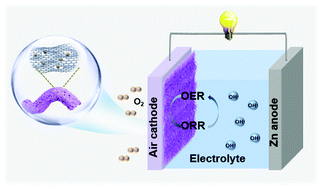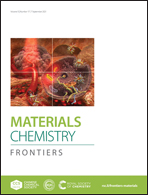Co3Fe7 nanoparticles encapsulated in porous nitrogen-doped carbon nanofibers as bifunctional electrocatalysts for rechargeable zinc–air batteries†
Abstract
Exploration of inexpensive and high-performance carbon-based electrocatalysts with abundant active sites for oxygen reduction and evolution reactions is vital for enhancing the performance of zinc–air batteries. Herein, well-dispersed Co3Fe7 nanoparticles encapsulated in porous nitrogen-doped carbon nanofibers (Co3Fe7-PCNF-850) are synthesized by employing polyvinylpyrrolidone (PVP) as the pore-forming agent via simple electrospinning and subsequent calcination. The resulting Co3Fe7-PCNF-850 with well-dispersed bimetal nanoparticles and a porous structure shows a half-wave potential of 0.85 V (vs. RHE) comparable to 20 wt% Pt/C for the oxygen reduction reaction, enhanced stability with negligible attenuation after 1000 cycles, high methanol resistance, and low overpotential for the oxygen evolution reaction. When Co3Fe7-PCNF-850 is employed as a cathode electrocatalyst, zinc–air batteries exhibit good cycling stability for 300 h and a high peak power density of 213 mW cm−2 due to its excellent bifunctional catalytic activity. This work provides a simple strategy for the combination of hierarchically porous structures of carbon fibers with the optimized bifunctional activity of bimetal nanoparticles to improve battery performance.



 Please wait while we load your content...
Please wait while we load your content...